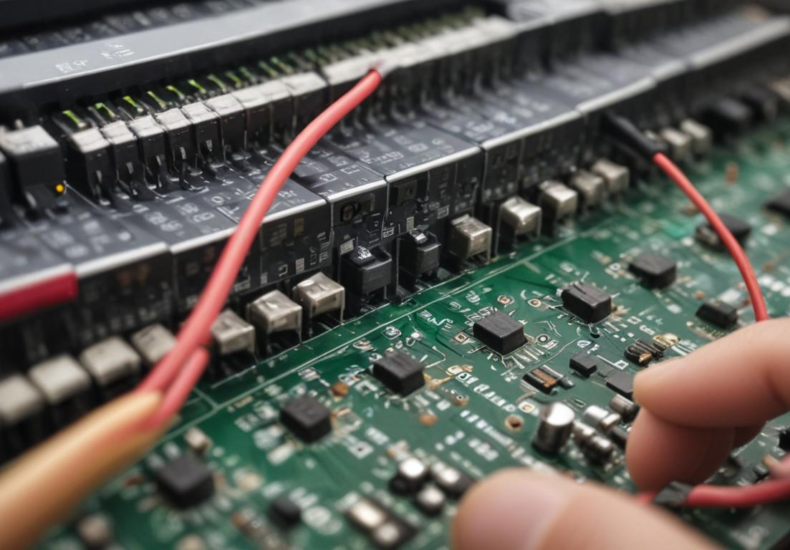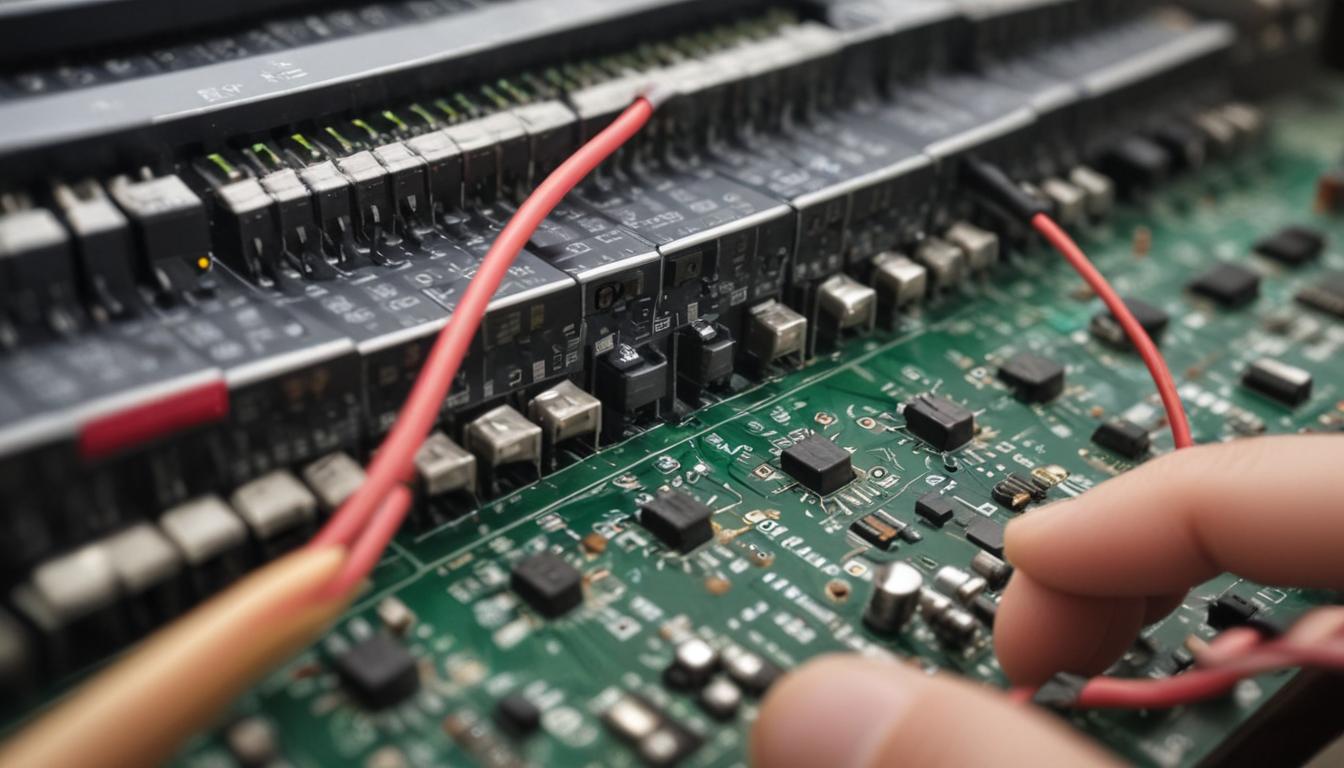
How to avoid common interference sources
Electromagnetic interference (EMI) is a prevalent issue in many electronic systems, often causing disruptions and degrading the quality of clean signals essential for reliable device functioning. To mitigate its impact, first identifying its common sources is crucial. One of the most common sources of EMI is radio-frequency interference from wireless communication devices such as mobile phones, Wi-Fi routers, and Bluetooth devices. These devices emit electromagnetic waves that can interfere with the operation of nearby electronics not adequately shielded or designed to handle such exposure.
Another significant source of EMI is electrical power lines and transformers. The high voltages involved can generate considerable electromagnetic fields capable of inducing unwanted currents in electronic circuits. Similarly, large electrical appliances within homes and offices, like microwaves and refrigerators, create electromagnetic spikes during operation that impact other devices within the same electrical circuit.
Fluorescent lighting is also a noteworthy contributor to environmental EMI. The ballasts used in fluorescent lights, especially older models, can produce significant electrical noise. This noise can be particularly disruptive in sensitive environments such as audio recording studios or precision testing facilities where maintaining electronic disruption-free conditions is vital. Also, industrial equipment like motors, generators, and compressors generate substantial EMI due to their high power usage and large moving components.
Lastly, poorly designed or damaged circuits can themselves become sources of EMI. Circuits without adequate grounding or those with incomplete shielding can emit stray electromagnetic fields that interfere with the functionality of their own components or nearby electronics. Understanding these various sources helps in developing strategic approaches to minimize their negative impact and maintain the integrity of sensitive electronic equipments.
Best practices for physical layout and design
When addressing the physical layout and design to combat EMI and maintain clean signals in electronic systems, strategic placement and orientation of electronic devices play a pivotal role. Proper physical separation between high-power devices and sensitive electronic equipment can prevent many common interference issues. For instance, placing a wireless router or a cellular phone far from sensitive audio or medical equipment can drastically minimize the likelihood of electronic disruption.
It is advisable to consider the orientation of cables and wiring in the design phase. Wires that run parallel to each other can induce electromagnetic interference if they are too close and not properly shielded. To mitigate this, crossing wires at right angles is often recommended, as it reduces the chances of EMI transfer between them. Additionally, ensuring that power cables are separated from data cables helps to prevent power-induced interference into signal lines.
In terms of the structural design of electronic spaces, utilizing partitions or dedicated enclosures can be extremely effective. These barriers can be made from materials that absorb or reflect electromagnetic waves, thereby protecting sensitive components from the harmful effects of EMI emitting devices. For instance, incorporating metallic mesh screens or ferromagnetic materials in the walls or cubicles of equipment rooms can significantly shield electronic devices from external electromagnetic sources.
Another critical aspect of design involves the proper grounding of electrical and electronic systems. Effective grounding serves not only as a safety measure but also significantly reduces electromagnetic interference. A common grounding network shared among all devices within a facility ensures that potential differences do not arise between equipment, which often is a precursor to EMI problems. Ground loops should be avoided as these can become inadvertent antennas that pick up or radiate EMI.
Lastly, the overall environment where electronic devices operate should be carefully controlled. Avoiding the proximity of electronic equipment to potential sources of interference, such as large metal objects or other electronic devices that emit strong electromagnetic fields, is essential. This can involve detailed planning and layout optimization during the initial design phase, which often pays dividends in enhancing the reliability and performance of sensitive electronic systems.
Utilizing shielding and filtering techniques
To further safeguard electronics from EMI and maintain clean signals, utilizing advanced shielding and filtering techniques is paramount. Shielding involves encasing electronics in a material that absorbs or reflects stray electromagnetic waves, whereas filtering refers to devices designed to block unwanted electrical noise from entering sensitive circuits.
One effective method for shielding is the use of metallic or conductive enclosures. Materials such as aluminum or copper are commonly used due to their excellent ability to reflect electromagnetic radiation. These enclosures are designed to form a Faraday cage, completely surrounding the electronic device. This setup ensures that any external electromagnetic fields do not reach the protected equipment. It’s essential, however, to ensure that these enclosures are properly sealed to prevent any leaks that could diminish their effectiveness.
On the filtering front, various types of filters can be implemented to protect against both conducted and radiated EMI. Low-pass filters are particularly effective as they allow signals below a specific frequency to pass while blocking those frequencies that are known to cause interference. Installing these filters in power supply lines, data transmission lines, and within the devices themselves helps maintain the integrity of the signals being processed or transmitted.
Another critical type of filtering involves the use of ferrite beads or cores. These components are clamped to the cables and act like a filter that dampens high-frequency noise. The ferrite materials absorb unwanted frequencies, thus preventing them from reaching the device. This is especially useful for cables that cannot be fully shielded, such as those that connect different pieces of equipment.
In addition to external shielding and filtering, internal board layout should also consider EMI reduction strategies. For instance, placing sensitive components away from high-frequency elements and ensuring that there are adequate ground planes can significantly reduce the risk of electronic disruption within devices.
Furthermore, it’s beneficial to incorporate EMI-specific testing early in the design phase. This way, any issues with shielding or filtering can be identified and addressed before mass production, thereby avoiding costly redesigns and ensuring that the electronics meet regulatory compliance for electromagnetic compatibility (EMC).
Implementing software solutions and settings

In the realm of combatting electromagnetic interference (EMI) in sensitive electronic environments, implementing software-based solutions and appropriate settings can be as crucial as hardware approaches. Sophisticated software controls and firmware settings play a pivotal role in reducing susceptibility to interference and maintaining clean signals across electronic systems.
One effective strategy involves the use of digital signal processing (DSP) techniques to reduce noise and enhance the quality of the signals. By applying algorithms that can distinguish between noise and the actual signal, DSP helps to filter out interference before it affects the performance of the device. This is particularly crucial in communication devices and audio/visual equipment where clarity and signal integrity are paramount.
Additionally, firmware in many modern electronic devices allows for the adjustment of sensitivity and selectivity settings that can be tuned to minimize the effects of EMI. By reducing the sensitivity, devices can be made less responsive to unwanted electromagnetic waves that may cause disruption. Alternatively, improving selectivity enables a device to better distinguish between legitimate signals and noise, preventing false activations or data errors.
Network devices such as routers and modems can benefit significantly from updated firmware that includes better algorithms for handling interference. These updates often enhance the device’s ability to operate in noisy electrical environments by prioritizing clean signal transmission and actively rejecting EMI that might originate from other household or office electronics.
Software settings that regulate the power output of devices can also reduce interference. By adjusting the transmission power to the minimum necessary level, devices not only operate more efficiently but also emit less electromagnetic energy, thereby reducing the potential for electronic disruption in nearby devices. This approach is essential in densely populated electronic setups like data centers, where numerous devices operate in close proximity.
For industrial environments, installing software that monitors EMI levels and automatically adjusts system operations during high interference periods can safeguard critical operations. This type of intelligent software not only helps in maintaining system reliability but also in extending the lifespan of electronic components that might otherwise be degraded by continuous exposure to high levels of EMI.
Lastly, it is beneficial to engage in proactive software management by regularly updating the operating systems and firmware of devices to incorporate the latest enhancements for EMI mitigation. Manufacturers frequently release updates that improve a device’s capability to manage and mitigate interference as new solutions are developed.
By utilizing these software solutions and settings, organizations and individuals can significantly fortify their electronic systems against the detrimental effects of EMI, ensuring more reliable operations and extending the longevity of their technological investments.
Regular maintenance and troubleshooting methods
Maintaining a rigorous regimen of regular maintenance and employing systematic troubleshooting methods are indispensable strategies for preventing EMI and ensuring the longevity of electronic systems. Regular maintenance includes scheduled inspections and the cleaning of electronic components to avoid the buildup of dust and debris, which can contribute to electronic disruption. Ensuring that all connectors and cables are properly seated and free from corrosion also plays a crucial role in maintaining clean signals throughout the operation of electronic devices.
Troubleshooting methods should involve a structured approach to diagnosing and resolving issues related to EMI. This often starts with a verification process to pinpoint the source of the interference. Technicians may use specialized equipment such as spectrum analyzers to detect the specific frequencies causing disruption. Once identified, targeted actions can be taken to eliminate or minimize the interference.
Another critical element of maintenance is the regular testing of shielding and filtering devices to ensure they continue to function correctly. Over time, wear and tear can degrade these components, diminishing their effectiveness at blocking or filtering out unwanted electromagnetic signals. By periodically testing these systems, any failures can be addressed promptly, thereby preventing potential disruptions in electronic devices.
Additionally, maintaining a comprehensive log of all maintenance and troubleshooting activities provides a valuable record that can help in diagnosing recurring issues. This documentation can reveal patterns that suggest more systemic problems within the electronic systems, guiding more permanent solutions rather than temporary fixes.
Proper training for personnel in EMI best practices is also essential to ensure that maintenance and troubleshooting procedures are carried out effectively. Training should cover not only the correct methods to identify and resolve interference issues but also preventive measures that reduce the risk of EMI affecting sensitive electronic components.
In sum, through diligent maintenance and systematic troubleshooting, it is possible to significantly reduce the impact of EMI on electronic systems. This not only ensures the integrity of clean signals but also contributes to the overall reliability and efficiency of technological operations.
You may also like
Archives
Calendar
| M | T | W | T | F | S | S |
|---|---|---|---|---|---|---|
| 1 | 2 | |||||
| 3 | 4 | 5 | 6 | 7 | 8 | 9 |
| 10 | 11 | 12 | 13 | 14 | 15 | 16 |
| 17 | 18 | 19 | 20 | 21 | 22 | 23 |
| 24 | 25 | 26 | 27 | 28 | 29 | 30 |
Leave a Reply